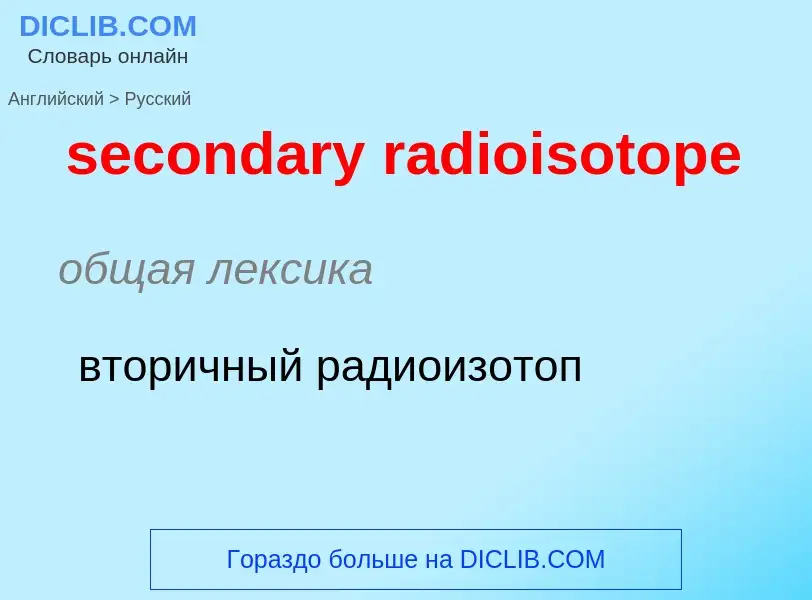Tradução e análise de palavras por inteligência artificial ChatGPT
Nesta página você pode obter uma análise detalhada de uma palavra ou frase, produzida usando a melhor tecnologia de inteligência artificial até o momento:
- como a palavra é usada
- frequência de uso
- é usado com mais frequência na fala oral ou escrita
- opções de tradução de palavras
- exemplos de uso (várias frases com tradução)
- etimologia
secondary radioisotope - tradução para russo
общая лексика
вторичный радиоизотоп
Definição
Wikipédia
Radioisotope power systems (RPS) are an enabling technology for challenging solar system exploration missions by NASA to destinations where solar energy is weak or intermittent, or where environmental conditions such as dust can limit the ability of a mission to achieve its scientific or operational goals. RPS use the heat generated by the natural radioactive decay of plutonium-238 (Pu-238), in the form of plutonium dioxide. All past RPS used in space have been radioisotope thermoelectric generators (RTGs), which use metallic thermocouples to transform the heat from their nuclear fuel into electrical power, using no moving parts. The currently available RPS, the Multi-Mission Radioisotope Thermoelectric Generator (MMRTG), operates with a beginning-of-life conversion efficiency of about 6.3 percent.
Dynamic RPS that utilize heat-engines have the potential to be three times more efficient than RTGs, which would allow RPS to use about one-third of the quantity of Pu-238 to produce a similar amount of power. Dynamic RPS also have the potential to provide higher specific power than RTGs, meaning they would provide more power per kilogram of system mass. These features could extend the utility of the heat source plutonium supply reserved for use on NASA missions by the U.S. Department of Energy, and allow for new or more robust concepts for future NASA missions.
Heat-engine thermodynamic cycles that could be useful for space applications include Stirling, Brayton, Rankine, and Ericsson. Engines based on these cycles can be coupled to alternators to provide a ‘convertor’ to transform radioisotope heat source energy into electricity for spacecraft. The potential disadvantage of dynamic RPS is the presence of moving parts. However, analytical studies and experimental evidence from long-term testing suggests the presence of moving parts does not preclude long design life. These types of cycles can be implemented in machines without any wear mechanisms, via design of non-contacting bearings and seals. The elimination of wear mechanisms is a prerequisite for long-life continuous operation necessary for NASA missions. Non-contacting seals can be achieved by use of close clearances with tight-tolerance manufacturing. With this, the design of components falls under the umbrella of standard engineering challenges for which methods exist to achieve the required life.


